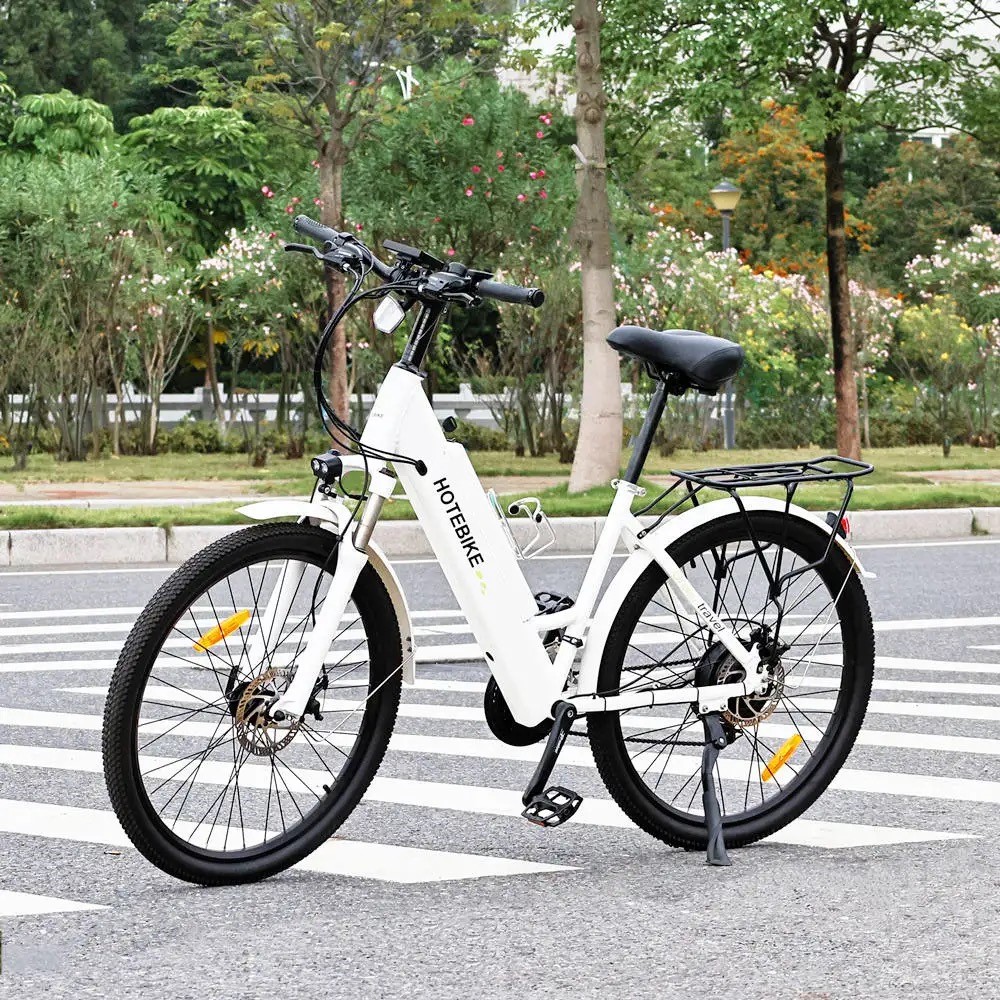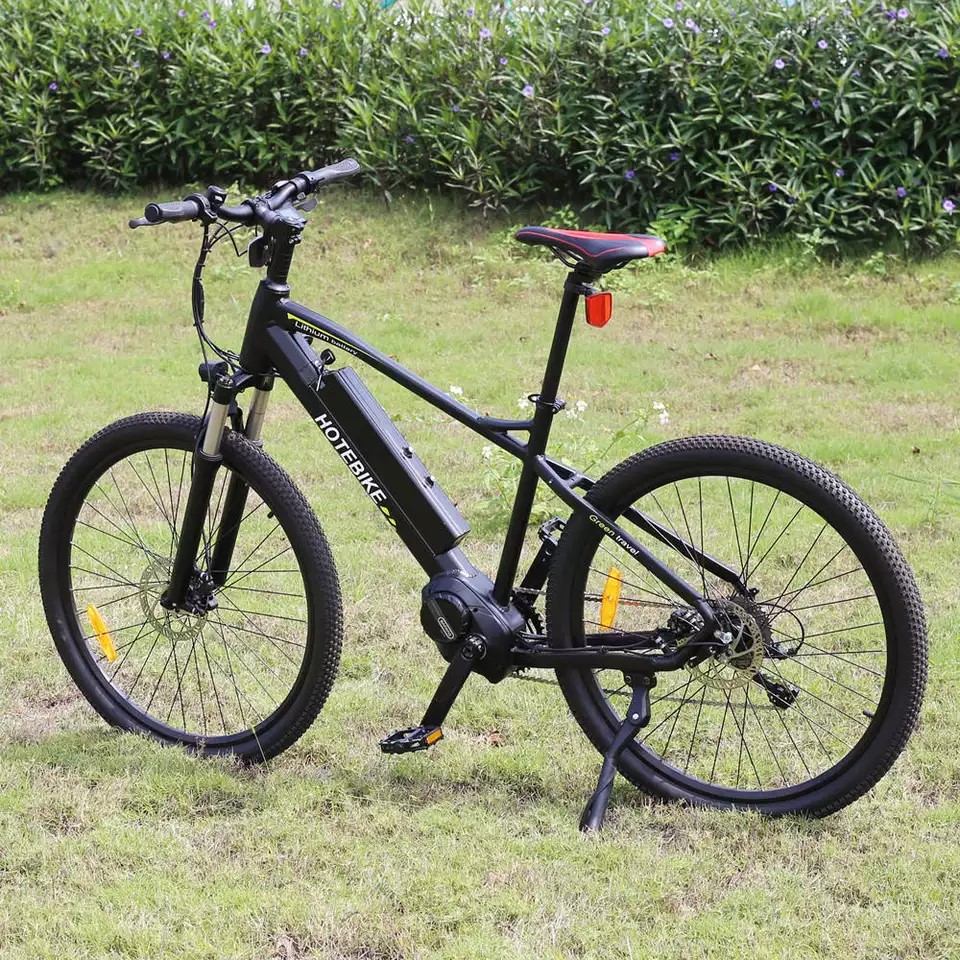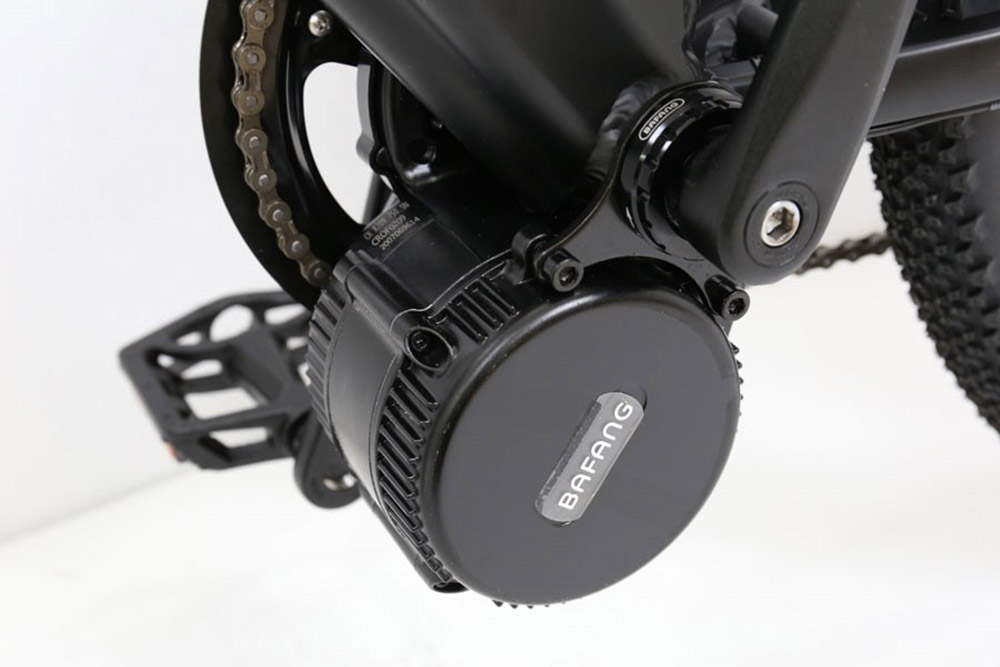Mid Drive Vs Hub Motor E-Bike
One of the most important decisions you’ll have to make when choosing the electric bikes is whether you want to go with a mid-drive or hub motor design. We’ll give you the following guides to help you choose the best ebike for your style of riding.
What is a Hub Motor Electric Bike?
A hub motor is the most common motor to be found on cheaper electric bicycles. The motor is either built into the front or rear wheel – the back wheel being the most common.
It directly powers the wheel it’s built into. In other words, it applies torque directly to the wheel. It operates completely separately from the bike’s drivetrain. A hub motor is not affected by gear changes.
Most hub motor e-bikes come with a cadence sensor based pedal-assist system. The cadence sensor measures if you’re pedaling. Some models also measure your pedaling speed.
When you start pedaling, the sensor sends a signal to the bike’s control unit. The control unit then turns the hub motor on. When you stop pedaling, the sensor signals the control unit and the motor shuts off. Higher-end hub motor ebikes come with a torque sensor pedal assist system instead. If you want to control the cost but need the ride of a mid-motor e-bike, Shuangye e-bike can offer you the rear hub motor with the torque sensor.

The mid-drive motor and gears are integrated into the pedal shaft of the eBike – between the pedals. It transfers power directly to the chain or belt which in turn drives power to the wheel. Meaning it is influenced by the gears. This kind of gearbox structure located in the bottom bracket is called a “mid-drive motor”. This type of motor is currently the best solution for electric bicycles, generally found on more expensive electric bicycles.
Mid motor electric bike motors have a built-in pedal-assist sensor. Most mid-drive ebikes come with a torque sensor. This sensor measures the amount of force you’re putting into the peddles and then relays this information to the bike’s control unit. The control unit then adjusts the level of assist based on that measurement.
When you pedal harder, the motor provides more power. When you pedal more gently, the motor provides less power. Some mid-drive ebikes use a cadence sensor instead. I’ll talk more about cadence sensors in the next section.
Most mid-drive ebikes only offer pedal assist. They do not have a throttle. This means you have to pedal in order for the motor to supply power. There are exceptions.
Mid drive electric bike motors are a relatively new technology. Mid-drive ebikes have only existed since around 2010. Expensive high-end ebikes tend to come with mid-drive motors. Mid-drive ebikes are sometimes referred to as central hub or mid-motor ebikes.

What are the difference of Hub Motor & Mid Drive motor e-bikes?
Pros & Cons
Mid Drive ebikes:
Pros
1. Lower Rolling Resistance And Higher Energy Conversion Rate
The mid-drive motor collects the power signal acting on the pedals and then cooperates with the clutch, driveshaft, differential, and other components to apply the output kinetic energy to the crankset to assist the rider in pedaling. In the case of no battery power, the mid-drive motor is completely separated from the bottom bracket axle, and there is no magnetic resistance. Therefore, when the battery is exhausted, you can still ride unimpeded.

2. More Torque
The mid-drive motor has a better gravity balance, it will not affect the balance of the bicycle under fast driving, and does not need additional batteries for counterweight. Therefore, most newly released electric bikes integrate the battery in the down tube. It will also reduce the burden on the braking system, improve braking performance and extend the life of the braking system.
3. A More Reasonable Center Of Gravity
The mid-drive motor has a better gravity balance, it will not affect the balance of the bicycle under fast driving, and does not need additional batteries for counterweight. Therefore, most newly released electric bikes integrate the battery in the down tube. It will also reduce the burden on the braking system, improve braking performance and extend the life of the braking system.
4. Less Wiring And A Higher Degree Of Integration
Many components are integrated into the mid-drive motor, with only a few wires extending out to connect to the handlebar controller. This simplified and integrated design makes the bicycle has a more concise appearance and convenient maintenance.
5. Lower Failure Rate
The mid-drive motor has a very high degree of integration, and can generally reach a protection level above IP65, it can completely resist dust intrusion and water jets at any angle.
Cons
1. More frequent maintenance
Mid-drive motors put stress on drivetrain components.
2. More expensive
Mid-drive ebikes start at around $2000. Maintenance is also more expensive.
3. Less reliable
Mid-drive motors have more moving parts.
4. Fewer bike options
Mid-drive ebikes are less common. Fewer options exist.
5. No throttle
Most mid-drive ebikes require that you pedal.
Mid Drive ebikes:
Pros
1. Cheaper
Hub motor ebikes cost $600-$1000 less than similar mid-drive models. Maintenance is cheaper as well.
2. Lower maintenance
Hub motors don’t put wear and tear on the bike’s drivetrain.
3. More reliable
Hub motors have fewer moving parts. They also offer redundancy.
4. Regenerative braking
Some hub motors can convert momentum into electricity to charge the battery.
5. More ebike options
There are far more hub motor ebike models to choose from.
6. Throttle control
Many hub motor ebikes allow you to ride without pedaling.
Cons
1. Less range
Most hub motor ebikes only get 25-30 miles of range.
2. Handling isn’t as good-
Hub motor ebikes can feel front-heavy or rear-heavy due to the motor placement.
3. Power delivery isn’t as smooth
Hub motors usually use cadence sensors. These can be laggy.
4. No gears
Hub motors can’t take advantage of the bike’s gears.
5. Heavier
Hub motors weigh 10-20 lbs.
6. Can’t climb well
You can’t gear down to climb. Hub motors can feel underpowered and can overheat on hills.
7. Less safe
Hub motors can cause dropout or fork failure.
8. Inferior performance
Hub motor ebikes can’t accelerate as fast, climb as well, or reach as high of top speed.
9. Less efficient
The motor only has one speed. You can’t gear up or down.
Final Thoughts About Mid Drive Vs Hub Motor Ebikes
Ebikes are quickly increasing in popularity. They are one of the fastest-growing sectors in the bicycle market. Ebikes are great for commuting, running errands, recreational riding, and even exercise. Riding an ebike is much cheaper and better for the environment than driving. It’s also significantly faster and less tiring than riding a non-powered bike.
The choice between a mid-drive and hub motor ebike really comes down to the range you need, the type of terrain you ride, and your budget. For casual riders who just need a reliable and affordable bike to get around town with, hub motor is a great way to go. If you need a bit more range or performance and your budget is higher, mid-drive may be the better option. Whichever type of ebike you choose to ride, I hope this guide has helped you in making your decision.
Do you ride a mid-drive or hub motor ebike? Share your experience to us!
 Shuangye ebike
Shuangye ebike
